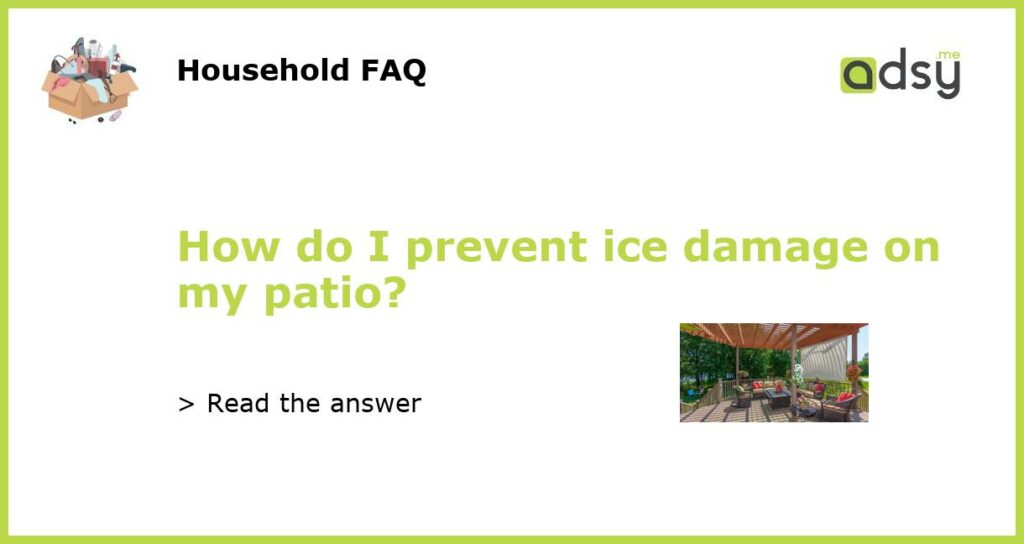Proper maintenance and cleaning
To prevent ice damage on your patio, it is important to properly maintain and clean it regularly. Remove any debris, leaves, or dirt that may accumulate on the surface of your patio. These can trap moisture and contribute to the formation of ice. Use a broom or leaf blower to clear the area, making sure to sweep away any remaining residue.
Regularly seal the patio
Sealing your patio regularly can help protect it from ice damage. Choose a high-quality sealant that is designed specifically for outdoor use. Apply the sealant according to the manufacturer’s instructions, ensuring that you cover the entire surface of the patio. The sealant creates a protective barrier that helps prevent water from seeping into the patio and freezing.
Use a de-icer or salt alternative
During colder months when ice may be a concern, it is important to take proactive measures. Use a de-icer or salt alternative to melt any existing ice or prevent it from forming. Be sure to use a product that is safe for use on your specific type of patio. Follow the instructions on the packaging carefully and consider using a spreader to evenly distribute the de-icer or salt alternative.
Create drainage paths
To avoid the accumulation of water that can freeze and cause damage, create proper drainage paths on your patio. Ensure that water can flow away from the surface and into areas where it can safely drain. This can be accomplished by adjusting the slope or installing discrete drainage channels that direct water towards a suitable outlet. By keeping the patio dry, you can minimize the risk of ice formation.
Provide heat sources
If you live in an area with particularly harsh winters, you may want to consider providing additional heat sources on your patio. Outdoor heaters, heated mats, or heated cables can help prevent ice formation. These can be installed permanently or used as temporary measures during colder periods. However, be sure to use these heat sources safely and according to the manufacturer’s instructions to avoid any potential hazards.

